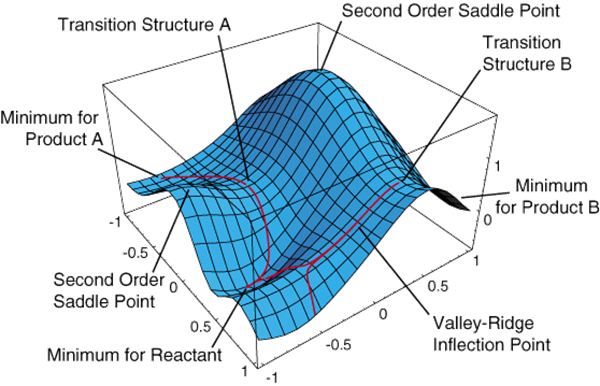
Exploring potential energy surfaces has been a guiding theme throughout my career. Over the years we have developed new algorithms and computer programs for optimizing equilibrium geometries, locating transition states and following reaction paths. In conjunction with these developments, we have written code for analytic energy derivatives and spin projection. We have used these tools in numerous studies of potential energy surfaces of organic, inorganic and biochemical reactions, often in direct collaboration with experimental groups.
a. Schlegel, H. B.; Optimization of equilibrium geometries and transition structures. J. Comput. Chem., 1982, 3, 214-218 (10.1002/jcc.540030212)
b. Gonzalez, C.; Schlegel, H. B.; Reaction Path Following in Mass-Weighted Internal Coordinates. J. Phys. Chem., 1990, 94, 5523-5527 (10.1021/j100377a021)
c. Peng, C.; Schlegel, H. B.; Combining synchronous transit and quasi-newton methods for finding transition states. Israeli J. Chem. 1993, 33, 449-54 (link)
d. Peng, C.; Ayala, P. Y.; Schlegel, H. B.; Frisch, M. J.; Using redundant internal coordinates to optimize equilibrium geometries and transition states. J. Comput. Chem. 1996, 17, 49-56 (link)
e. Schlegel, H. B.; Geometry Optimization, WIREs Comput. Mol. Sci. 2011,1, 790-809 (10.1002/wcms.34).